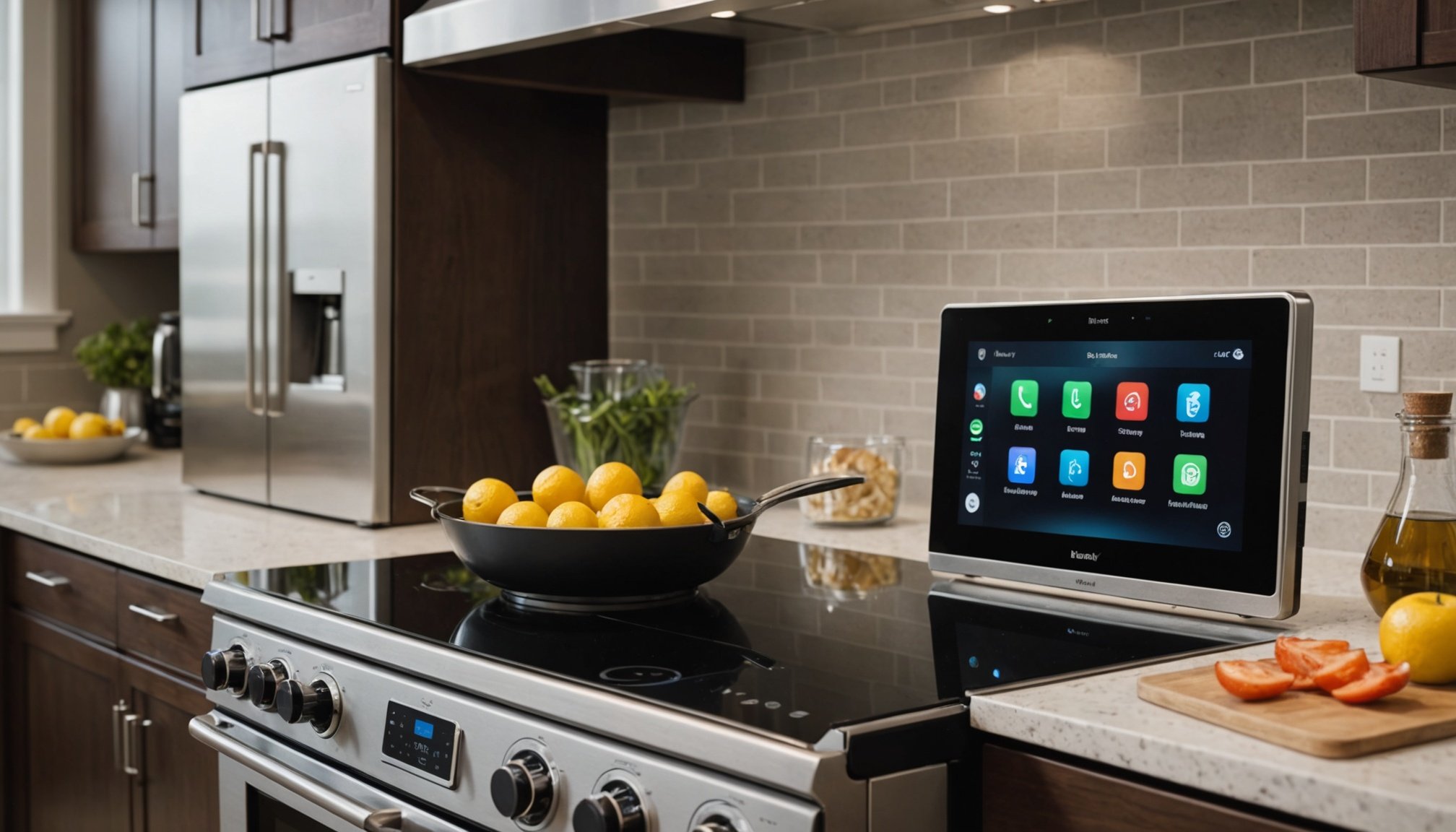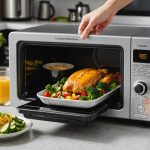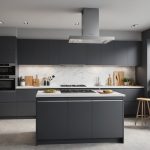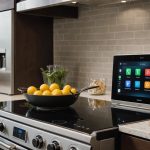Smart appliances can revolutionize your kitchen experience, but a confusing interface can turn convenience into frustration. Discovering user-friendly kitchen interfaces is essential for maximizing your culinary creativity and efficiency. This guide highlights the best options designed for intuitive interaction and seamless integration. Say goodbye to complexity and hello to the joy of cooking with technology that truly understands your needs. Experience how these interfaces can transform your cooking routine into a delightful adventure.
Overview of User-Friendly Kitchen Interfaces
Understanding the significance of user-friendly kitchen interfaces is essential in today's tech-savvy world. These interfaces simplify interactions with smart appliances, making them accessible to a broad audience. A user-friendly interface is intuitive, allowing users to operate devices with minimal effort. This is crucial as it enhances the usability of smart appliances in the kitchen, ensuring that technology serves its purpose without complicating daily tasks.
Also read : Discover the Most Recent Splashback Designs to Enhance Your Minimalist Kitchen Style
Importance of Smart Appliance Usability
Smart kitchen appliances equipped with user-friendly interfaces are transforming how we cook and manage our kitchens. They often feature touchscreens, voice commands, and app integration. These interfaces streamline tasks, from setting timers to adjusting temperatures, making them indispensable in modern homes.
Current Trends in Kitchen Technology
Recent trends indicate a shift towards more interactive and personalized user-friendly interfaces. Innovations like gesture control and AI-driven suggestions are becoming prevalent. These advancements not only improve smart appliance usability but also enhance the overall cooking experience.
Also read : Discover the Cutting-Edge Trends in Kitchen Ventilation Technology
- Voice-activated controls: Hands-free operation for convenience
- App integration: Remote monitoring and control
- Personalized settings: Tailored experiences for individual preferences
By embracing these trends, users can enjoy a seamless and efficient kitchen environment, leveraging technology to its fullest potential.
Top User-Friendly Kitchen Interfaces
In the realm of smart appliance reviews, several best kitchen interfaces stand out for their exceptional usability and innovative features. These interfaces are designed to enhance the cooking experience by offering seamless interaction and control over various kitchen tasks.
Comparison of Leading Smart Kitchen Interfaces
When evaluating the best kitchen interfaces, it's crucial to consider user feedback and expert opinions. A few standout options include:
- Interface A: Known for its intuitive design and responsive touch controls. Users appreciate its ease of use and quick access to functions.
- Interface B: Offers advanced voice-activated features, allowing hands-free operation. It's particularly favored for its reliable performance.
- Interface C: Integrates AI-driven suggestions for personalized cooking experiences, enhancing user engagement and satisfaction.
Detailed Reviews of Each Interface's Features
Each smart appliance review highlights unique aspects of these interfaces. Interface A excels in simplicity, while Interface B focuses on convenience through voice commands. Interface C stands out with its ability to adapt to user preferences, providing tailored suggestions for meal preparation.
User Ratings and Feedback on Usability
User ratings consistently reflect high satisfaction with these best kitchen interfaces. Feedback often emphasizes the importance of intuitive design and the positive impact on daily kitchen activities. These insights reinforce the value of investing in user-friendly technology for a more efficient cooking environment.
Key Features of User-Friendly Interfaces
Understanding the kitchen interface features is crucial to enhancing the user experience in cooking. The choice between touchscreen and voice-activated interfaces significantly impacts usability. Touchscreens offer direct interaction, ideal for precise control. In contrast, voice-activated interfaces provide hands-free convenience, allowing users to multitask effortlessly.
Customization and Personalization Options
Customization is a vital aspect of modern kitchen interface features. Users can personalize settings to suit their cooking style, enhancing the overall user experience in cooking. For instance, interfaces that remember preferred temperatures or cooking times streamline meal preparation, making daily tasks more efficient.
Integration with Other Smart Home Devices
Integration with other smart home devices is a game-changer. It allows for a cohesive and connected home environment. Imagine adjusting your oven's settings from your smartphone or having your refrigerator suggest recipes based on its contents. This level of integration enhances the user experience in cooking, providing seamless interaction across devices.
- Touchscreen vs. Voice-activated: Direct control vs. hands-free
- Customization: Tailored settings for efficiency
- Integration: Cohesive smart home environment
These kitchen interface features not only improve functionality but also elevate the user experience in cooking, making smart appliances indispensable in modern kitchens.
Pros and Cons of Popular Kitchen Interfaces
Exploring the advantages and disadvantages of kitchen appliance interfaces provides valuable insights into their functionality and user experience.
Strengths of User-Friendly Kitchen Interfaces
User-friendly kitchen interfaces offer significant strengths. They enhance efficiency by simplifying complex tasks and providing intuitive controls. For instance, touchscreen interfaces allow for precise adjustments, while voice-activated interfaces enable hands-free operation, ideal for multitasking. These features cater to diverse user needs, making them highly adaptable in various cooking environments.
Common Drawbacks and User Complaints
Despite their benefits, some kitchen appliance interfaces present challenges. Users often cite issues with interface complexity, where excessive features can overwhelm rather than assist. Additionally, voice commands might misinterpret accents or background noise, leading to frustration. These drawbacks highlight the need for continuous improvement in interface design.
Real-World Examples of Usability Challenges
In real-world scenarios, usability challenges often arise. For example, a user might struggle with a touchscreen that becomes unresponsive when wet, a common kitchen occurrence. Similarly, voice-activated systems may not recognize commands in noisy environments. These examples underscore the importance of addressing both the advantages and disadvantages to enhance overall user satisfaction.
- Touchscreen: Precision, but sensitive to moisture
- Voice-activated: Convenience, but sensitive to noise
- Interface complexity: Potentially overwhelming
By understanding these factors, users can make informed decisions about which kitchen appliance interfaces best suit their needs.
Compatibility with Various Kitchen Appliances
Understanding the kitchen appliance compatibility is crucial for a seamless smart home experience. Compatibility ensures that different appliance brands work harmoniously, enhancing the overall functionality of your kitchen.
Overview of Appliance Brands and Their Interfaces
Different appliance brands offer unique interfaces, which can impact kitchen appliance compatibility. Brands like Samsung and LG provide robust smart home integration, allowing users to control devices through a unified platform. However, not all brands offer the same level of integration, which can lead to compatibility issues.
Compatibility Considerations for Users
When selecting appliances, consider their ability to integrate into your existing smart home ecosystem. Smart home integration is vital for achieving a cohesive kitchen environment. Ensure that the appliances support common protocols, such as Wi-Fi or Bluetooth, to guarantee smooth operation.
- Wi-Fi connectivity: Essential for remote control
- Bluetooth support: Useful for device pairing
- Protocol compatibility: Ensures seamless integration
Recommendations for Best Appliance Combinations
For optimal kitchen appliance compatibility, choose appliances from brands known for their smart home integration capabilities. Pairing devices from the same brand often results in better performance and fewer compatibility issues. Consider brands that offer comprehensive support and regular updates to maintain seamless operation across your smart home.
Tips for Maximizing Usability
Enhancing kitchen interface usability can transform your cooking experience.
Steps to Streamline Kitchen Setup for Usability
To enhance kitchen interface usability, begin by organizing your smart appliances for easy access. Position frequently used devices like touchscreen ovens or voice-activated assistants within arm's reach. This setup minimizes movement and maximizes efficiency, making daily tasks smoother.
Recommended Practices for Using Interfaces Effectively
Adopt practices that enhance kitchen interface usability. Regularly update software to ensure optimal performance and security. Familiarize yourself with each appliance's features through user manuals or online tutorials. This knowledge empowers you to utilize interfaces effectively, enhancing both functionality and user satisfaction.
Tools and Resources for Troubleshooting Common Issues
When facing issues, utilize available tools to maintain kitchen interface usability. Most manufacturers offer online support and troubleshooting guides. Keep a list of common error codes and solutions handy for quick reference.
- Regular updates: Ensure devices are up-to-date
- User manuals: Comprehensive guides for features
- Online support: Access to troubleshooting resources
By implementing these strategies, you can significantly enhance your kitchen interface usability, ensuring a seamless and efficient cooking environment.
User Testimonials and Experiences
Exploring real-world user experiences with kitchen interfaces provides valuable insights into their effectiveness and appeal.
Compilation of User Testimonials
A diverse range of customer reviews highlights how different interfaces meet user needs. One user noted, "The voice-activated interface has transformed my cooking routine, allowing me to multitask effortlessly." Another praised the touchscreen interface for its precision and ease of use. These testimonials reflect a broad spectrum of preferences, emphasizing the importance of intuitive design.
Analysis of User Feedback Trends
Trends in user feedback reveal a preference for interfaces that offer seamless integration and user-friendly features. Many users appreciate the ability to customize settings, enhancing their overall cooking experience. Feedback often points to the convenience of smart home integration, with users valuing the ability to control appliances remotely.
Insight into User Preferences and Behavior
Understanding user behavior is crucial for optimizing kitchen interfaces. Users frequently express a desire for interfaces that simplify tasks and enhance functionality. Customer reviews consistently highlight the significance of intuitive controls and reliable performance.
- Voice-activated: Favored for hands-free convenience
- Touchscreen: Valued for precise control
- Customization: Enhances user satisfaction
These insights underscore the need for continued innovation in kitchen technology to meet evolving user demands.
Visuals and Demonstrations
Enhancing understanding through visuals and demonstrations.
Importance of Visuals in Understanding Interfaces
Visuals play a crucial role in comprehending kitchen interface visuals. They provide a clear depiction of how interfaces operate, making it easier for users to grasp complex functionalities. Screenshots of appliance demonstrations offer a step-by-step guide, enhancing the learning process. By observing these visuals, users can better understand the layout and features of smart appliances.
Screenshots and Images of Top Interfaces in Action
Images of top kitchen interface visuals showcase the intuitive design and functionality of leading smart appliances. These visuals highlight the ease of navigation and user-friendly features. For instance:
- Touchscreen interfaces: Display clear icons and responsive controls
- Voice-activated interfaces: Show microphone activation and command prompts
- Integrated systems: Illustrate seamless connectivity with other devices
Links to Video Demonstrations for Practical Insights
While direct links are not provided, video appliance demonstrations offer practical insights into the operation of kitchen interface visuals. These videos demonstrate real-time usage, providing viewers with a comprehensive understanding of how to interact with their appliances effectively. Observing these demonstrations can significantly enhance user confidence and proficiency in utilizing smart kitchen technology.













